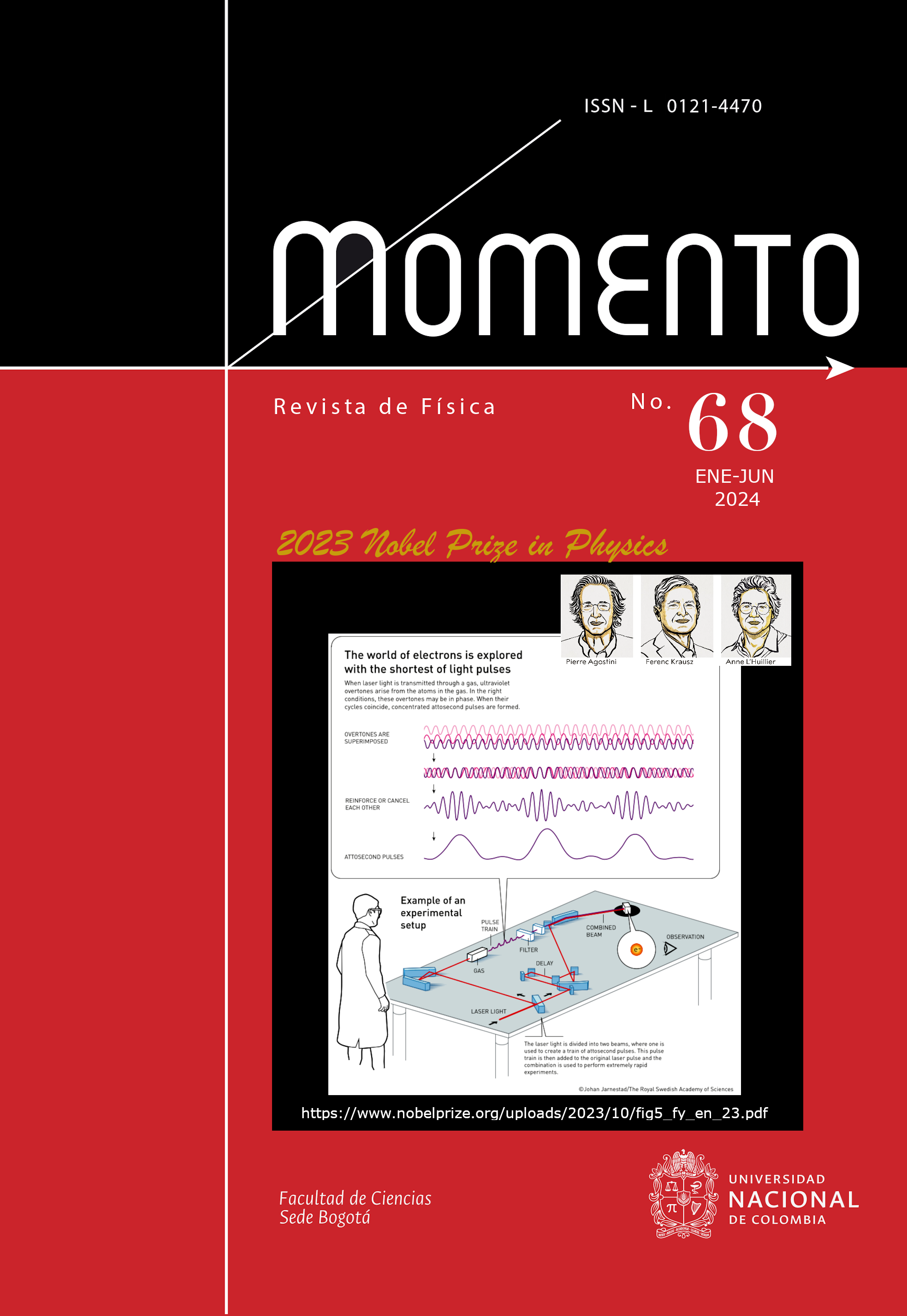PREMIO NOBEL DE FÍSICA 2023
Keywords:
Premio Nobel de Física (es)Premio Nobel de Física (en)
Downloads
El Premio Nobel de Física 2023 fue otorgado a:
- Pierre Agostini, The Ohio State University, Columbus, USA.
- Ferenc Krausz, Max Planck Institute of Quantum Optics, Garching, Germany and Ludwig-Maximilians-Universita ̈t Mu ̈nchen, Munich, Germany.
- Anne L’Huillier, Lund University, Sweden.
“Por desarrollar métodos experimentales, que facilitan la generación de pulsos de luz de attosegundos de duración que permitirán el estudio de la dinámica electrónica en la materia”[1]
Para contextualizar lo dicho por la Academia Sueca debemos tener presente que Atto (símbolo a) es un prefijo del Sistema Internacional que indica un factor de 10−18. El origen de este prefijo es la palabra danesa atten, que significa “dieciocho”. Esta unidad de tiempo es tan corta que hay tantos attosegundos en un segundo como segundos ha habido desde los albores del universo, hace aproximadamente 13.800 millones de años. En esta escala de tiempo, el tiempo prácticamente está detenido para todo, excepto para los electrones. ...
El Premio Nobel de Física 2023 fue otorgado a:
- Pierre Agostini, The Ohio State University, Columbus, USA.
- Ferenc Krausz, Max Planck Institute of Quantum Optics, Garching, Germany and Ludwig-Maximilians-Universita ̈t Mu ̈nchen, Munich, Germany.
- Anne L’Huillier, Lund University, Sweden.
“Por desarrollar métodos experimentales, que facilitan la generación de pulsos de luz de attosegundos de duración que permitirán el estudio de la dinámica electrónica en la materia”[1]
Para contextualizar lo dicho por la Academia Sueca debemos tener presente que Atto (símbolo a) es un prefijo del Sistema Internacional que indica un factor de 10−18. El origen de este prefijo es la palabra danesa atten, que significa “dieciocho”. Esta unidad de tiempo es tan corta que hay tantos attosegundos en un segundo como segundos ha habido desde los albores del universo, hace aproximadamente 13.800 millones de años. En esta escala de tiempo, el tiempo prácticamente está detenido para todo, excepto para los electrones. ...
References
Comunicado de la Real Academia Sueca de Ciencias Oct. 3 de 2023. https://www.nobelprize.org/prizes/physics/2023/summary
Philippe Antoine, Anne L'Huillier, and Maciej Lewenstein, Phys. Rev. Lett. 77, 1234 (1996). DOI:https://doi.org/10.1103/PhysRevLett.77.1234
E. A. Nersesov, S. V. Popruzhenko, D. F. Zaretsky, W. Becker, and P. Agostini, Phys. Rev. A 64, 023419 (2001). DOI:https://doi.org/10.1103/PhysRevA.64.023419
M. Hentschel, R. Kienberger, Ch. Spielmann, G. A. Reider, N. Milosevic, T. Brabec, P. Corkum, U. Heinzmann, M. Drescher and F. Krausz. Attosecond metrology. Nature 414, 509–513 (2001). DOI:https://doi.org/10.1038/35107000
How to Cite
APA
ACM
ACS
ABNT
Chicago
Harvard
IEEE
MLA
Turabian
Vancouver
Download Citation
Article abstract page views
Downloads
License

This work is licensed under a Creative Commons Attribution-NoDerivatives 4.0 International License.
Those authors who have publications with this journal, accept the following terms:
a. The authors will retain their copyright and will guarantee the publication of the first publication of their work, which will be subject to the Attribution-SinDerivar 4.0 International Creative Commons Attribution License that permits redistribution, commercial or non-commercial, As long as the Work circulates intact and unchanged, where it indicates its author and its first publication in this magazine.
b. Authors are encouraged to disseminate their work through the Internet (eg in institutional telematic files or on their website) before and during the sending process, which can produce interesting exchanges and increase appointments of the published work.



















